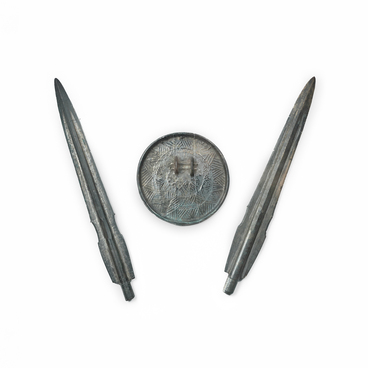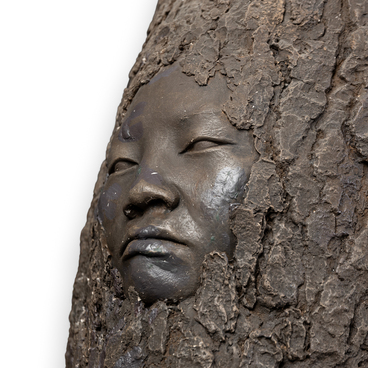The collection of the Vladimir Arseniev Museum of Far East History includes a typical Orochi garment — a heavily decorated open robe (pokto), similar to a kimono with long sleeves tapering at the wrist. In the fall and winter, it was lined with fox fur and dog skin. The cut was based on the traditional Manchurian robe with side fastenings. In the early 20th century, having started trading with local merchants, the Orochi people began to make such robes from cloth.
The robe is decorated with spiral vegetal patterns. Being an integral part of folk art, decorative patterns feature on practically all household items of the indigenous peoples of the Far East. The most common decorative pattern in the Amur River region is based on spirals and bands, with a winding line periodically twisting into a spiral. The lines form intricate openwork compositions with multi-part symmetries filled with stylized plant and animal motifs. The unique nature of the pattern (geometric complexity, laconic composition, placement on the items) contrasts the harsh living conditions in which local artisans lived until the first half of the 20th century.
Fish skins, most often Siberian salmon, served as the main material for making everyday and working clothes for the indigenous peoples of the south of the Far East. Chinese merchants who conducted exchange trade with them described the Nanai, Udege, and Orochi people as fish-skin barbarians. For festive clothing and its elements, they used carp skins with characteristic large-mesh texture, which served as an additional design element. Besides, the material made of this fish could be well bleached in the frost and easily dyed, which made the products especially beautiful. The degree of leather processing depended on its further use. Special indents from scales were left on the material intended for work coats, and when sewing the skins were placed with these indents downwards so to promote water run-off while fishing or in the rain water did not stay on the clothes. The softest skin was used for festive and wedding robes, as well as children’s clothes, and for this purpose it was thoroughly kneaded in the machine, then scraped with a pumice stone, knife or glass and, finally, rubbed on a smooth rounded log. It took an average of 30 fish skins to sew one robe.
At the turn of the 20th
century, fabric made at Russian and Chinese factories began to be used by the
indigenous population of the Far East, but fish leather clothing continued to
be worn until the 1920s.


